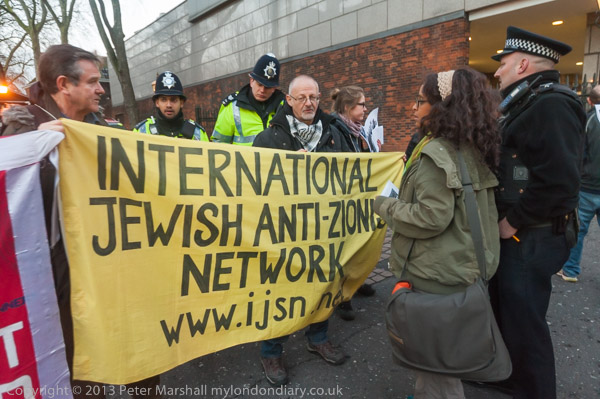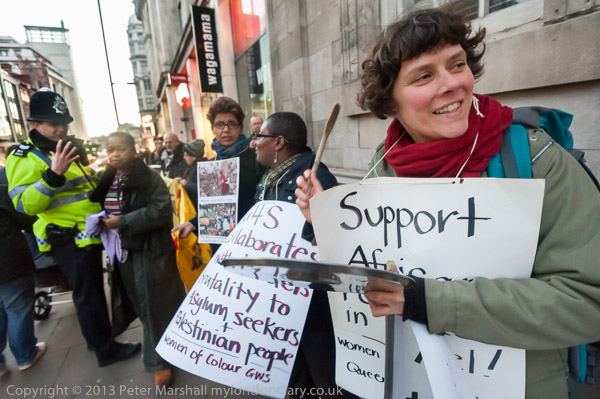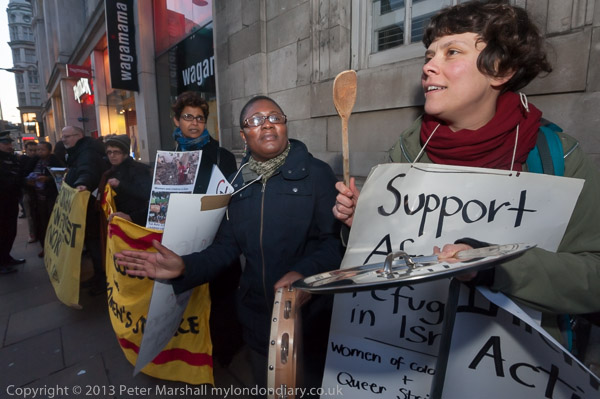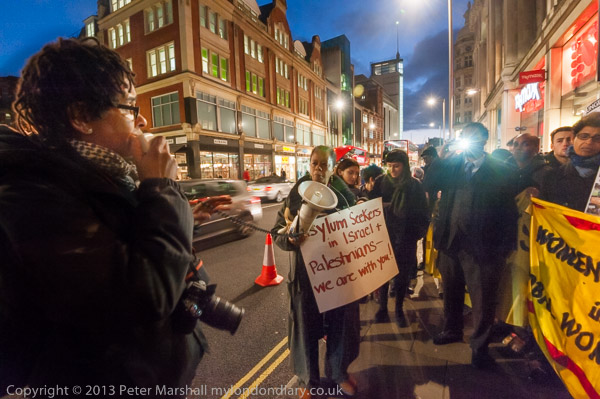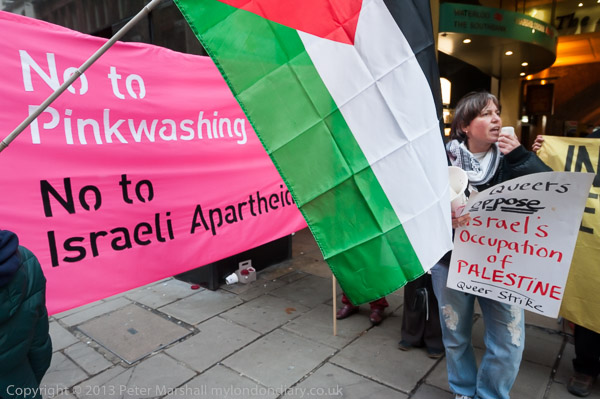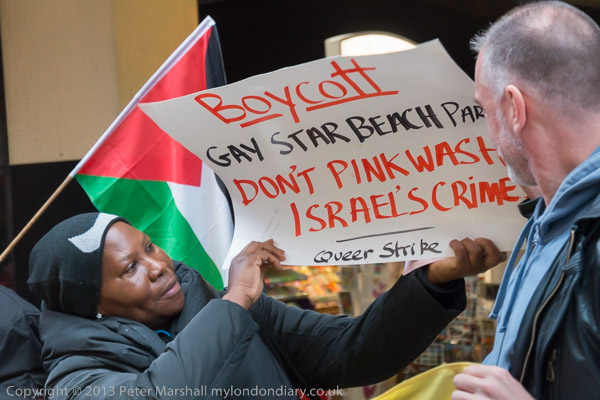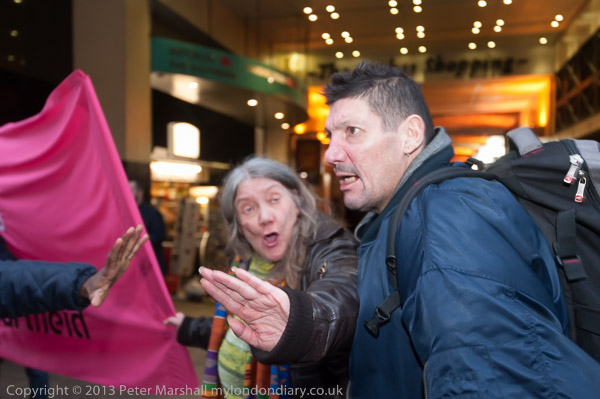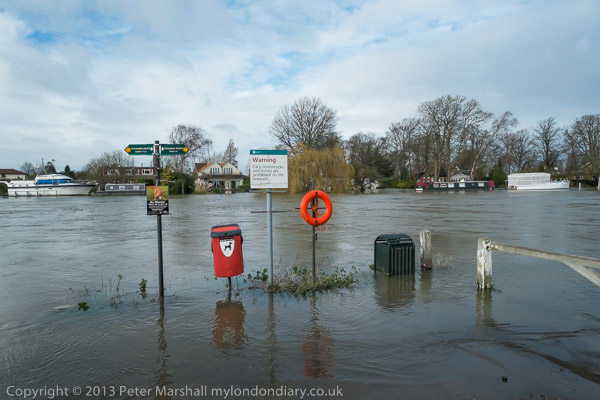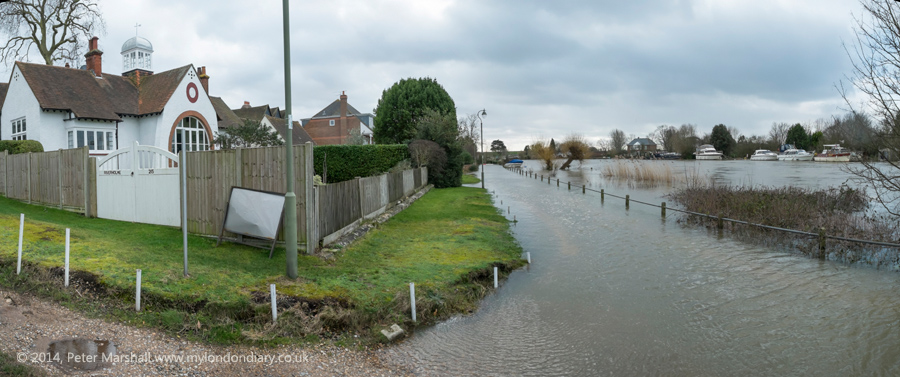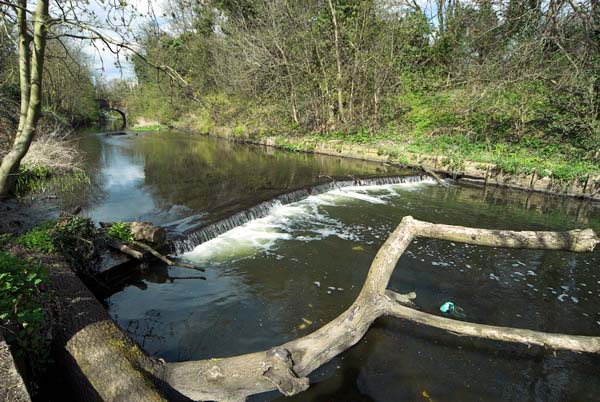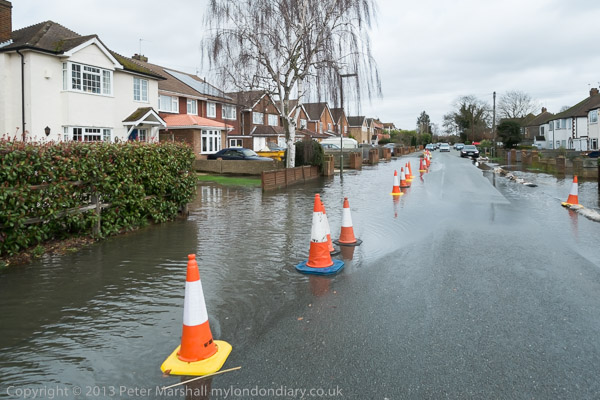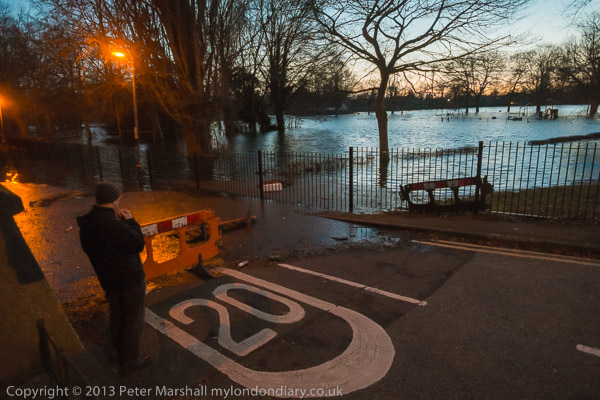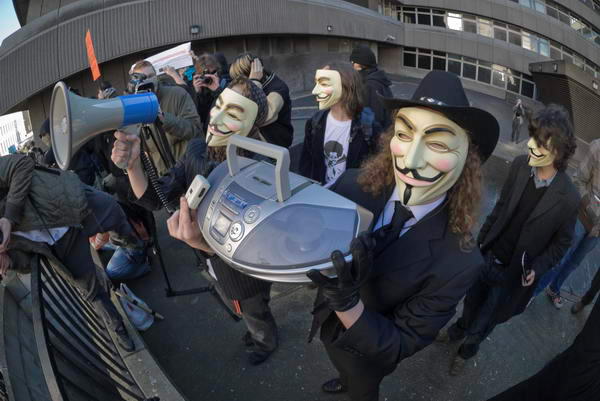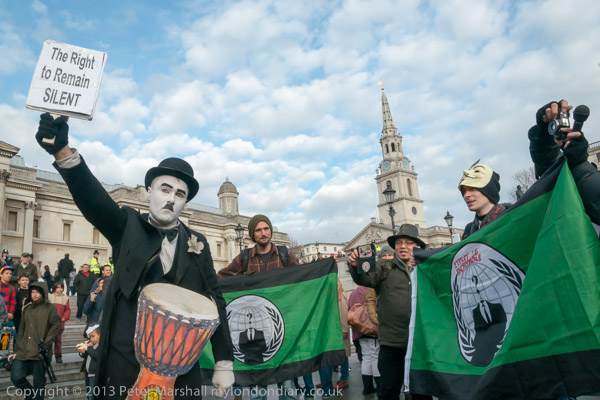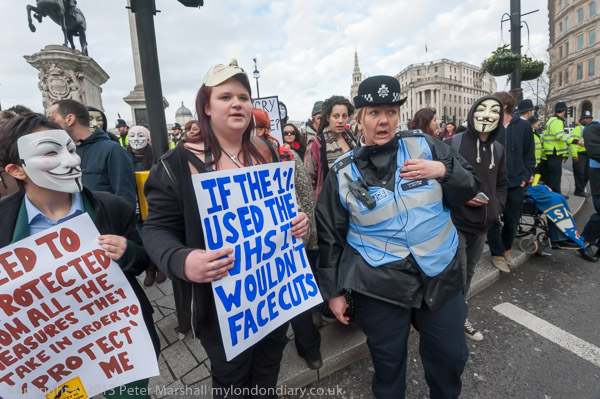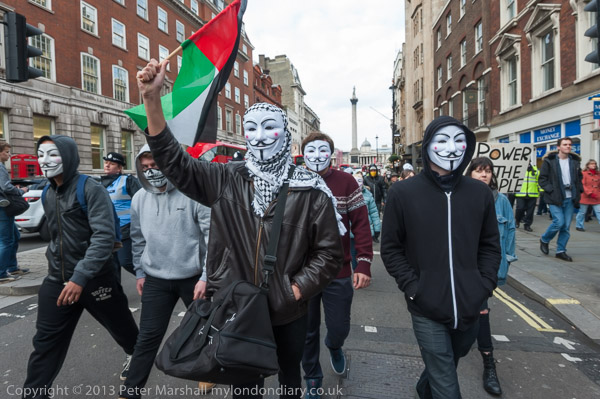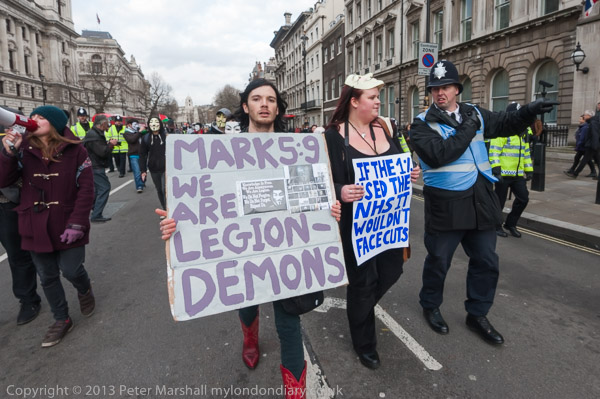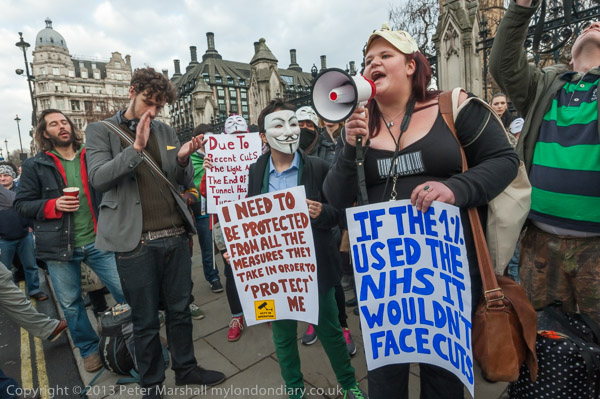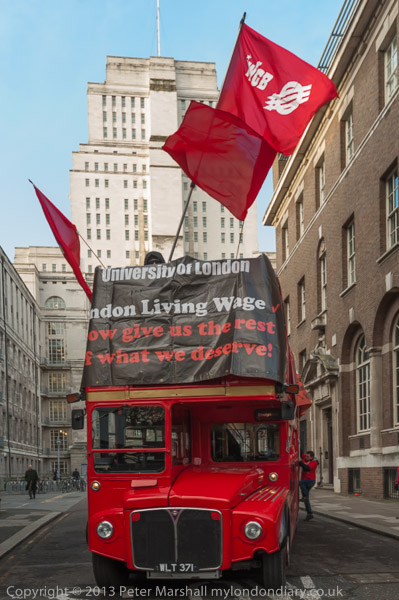
The bus in front of Senate House, University of London
I’m not generally an early riser or at my best in the early morning. Getting up when it’s dark seems unnatural to me, though I did it for around 30 years every winter when I worked as a full-time teacher, I never really adjusted to it, nor to leaving work after dark to come home.
For some years I travelled to work by train, but fortunately further away from London than where I live, so travelled in relative comfort, looking across to the crowded platform on the up side of commuters who would be standing in packed trains and bumped around the 40 or so minutes to Waterloo. My wife then took a train around an hour earlier than me to be reasonably sure of getting a seat.
Occasionally now I find myself coming back from London during the rush hour, often having to stand at least part of the way, which after four or five hours working on my feet is something of a pain. Sometimes the trains are so packed that even if you can’t find anything within reach to hold on to there is no room to fall down. Though the trains do run a little more smoothly than they used to.
But the journey times are longer now than when we moved here, thanks largely to the threat of penalties for late running introduced in a misguided attempt to make a privatised railway more competitive. And for the privilege of travelling during these uncomfortable times you pay more. It costs me roughly double the fare to go to London before 10am (and it is cheaper after noon.) A return fare to Waterloo is more or less the average payment I get from my main agency for image use – and about ten times the lowest fee they sold an image for last month.
So it has to be a very special event that gets me out of bed early and on a crowded train at around 7.30am. I was lucky to get the last empty seat in a full carriage, already with some people standing when it drew in, having to squeeze between two rather wider commuters on a seat made for three people of normal width.
At Waterloo, the queue for the bus I’d intended to get stretched way back, and I decided to walk the mile and a half instead, though I managed to jump on a different bus at the next stop for a third of the mile of it.
And it was a special day. The cleaners from the IWGB were on the second day of a three day strike at the University of London in their struggle for the same conditions of work – sick pay, holidays and pensions – as directly employed workers there. These three things are the ‘3 Cosas’ in the name of their struggle, which unites workers (many Spanish-speaking and originally for Latin America, hence the name) from various unions with the support of students and university staff, though this strike was also about getting recognition for their union and saving jobs of staff currently employed at some of the University halls of residence. The main union, to which most of the cleaners belong is the small IWGB, the Independent Workers’ Union of Great Britain, and this is not recognised by the University or their contract employers, now Cofely GDF-Suez. The IWGB had arranged for an open-top bus to take them on a tour around London to various suitable locations to protest or hold rallies.
I’ve photographed many protests with the IWGB, including those inside John Lewis stores in Stratford Westfield and Oxford St, as well as at the University of London Senate House, and when I’d met some of the leading figures from ‘3 Cosas’ at a protest the previous week they had urged me to come, telling me they’d reserved a seat on the bus for me.
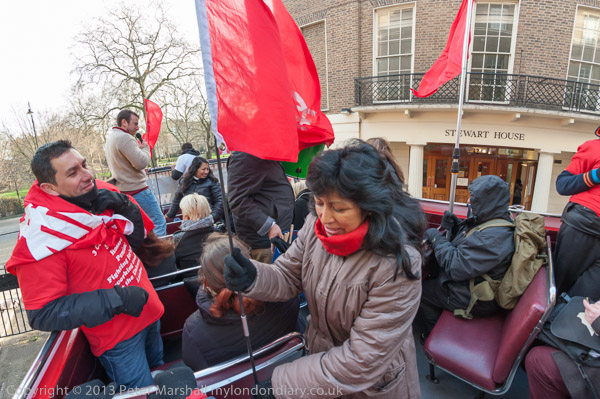
Fortunately although this was a January and the wettest January since proper records began, the sun shone on us (at least most of the time.) The top of the bus was very crowded, but I was able to find a good position, though it was tricky to move around much (and if I moved away I would have been unlikely to get back), so most of my pictures were taken from a relatively small area, working very close to people.
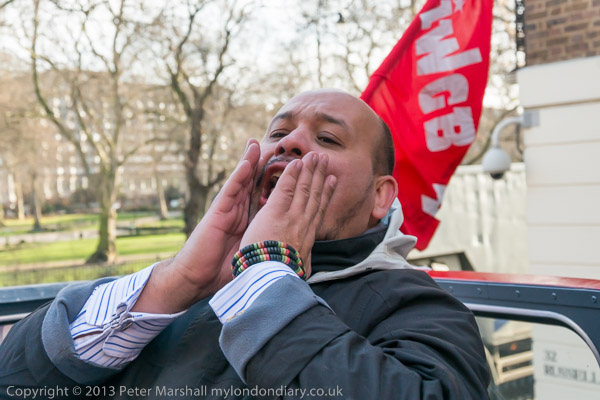
I’d started off taking pictures mainly with the 16-35mm on the D700, but I found I was just too close most of the time for this to be useful. I could take pictures of individuals with the 18-105mm, like that of IWFB president Alberto Durango (38/57mm, 1/500s f8 ISO 800) but wanted to give more of the impression of the event as a whole. There were quite a few IWGB flags around which I wanted to get in the background, but they were blowing around even here as the bus started to move off, and I was pleased to have got a frame where the logo was visible behind Alberto shouting to encourage the workers. The background at left is Russell Square and at bottom right through the bus window is part of the address of the university offices in Stewart House.
I’d decided the best position would be close to but not quite at the front of the bus, and most of the pictures were taken from here. There are quite a few I like, and you can see the best of them in ‘3 Cosas’ Strike Picket and Battle Bus.
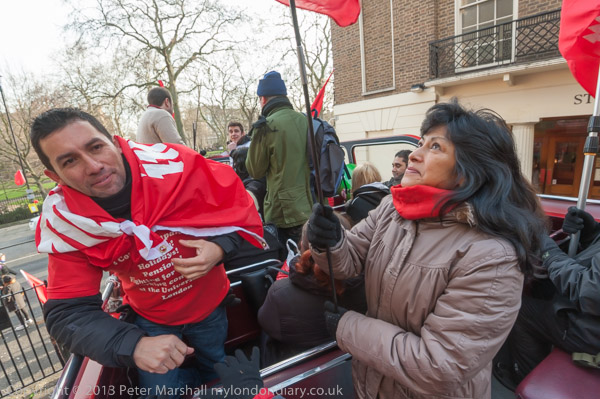 16mm rectilinear view – 16-35 f4 Nikon zoom. 1/160 f6.3 ISO 800
16mm rectilinear view – 16-35 f4 Nikon zoom. 1/160 f6.3 ISO 800
As the bus was getting ready to leave, I was photographing mainly with the 16-35mm and switching between this and the Nikon 16mm f2.8 D AF full-frame fisheye on the D700, keeping the DX 18-105 (27-157eq) on the D800. I’m impressed by the 16mm, a beautifully light and compact lens for full-frame, and the results are perhaps slightly better than the 10.5mm DX (which is also slightly heavier.) Most if not all the pictures I took with this lens have been post-processed using the Fisheye-Hemi plugin, which retains the centre of all four edges of the frame, but loses a little from each corner to provide a very wide but more natural view. It requires just a little mental gymnastics in use, remembering that the corners of what you see will be lost, but the results are interesting. The two pictures above and below are a couple of ‘before and after’ pictures, the first made with the 16-35mm rectilinear lens, and the second a minute or so later from the same position after a lens change, with the fisheye and later processed with the plugin.

16mm cylindrical view – 16mm Nikon f2.8 D AF full-frame fisheye/Fisheye-Hemi processed. 1/160 f6.3 ISO 800
Of course people have moved a little betwen the two pictures, but it gives a very good idea of the different views the two lenses give. The 16mm rectilinear lens gives a horizontal angle of view of around 96 degrees while that of the fisheye is significantly greater at around 140 degrees. It is a great lens for working in very confined spaces – such as on the top of the bus.
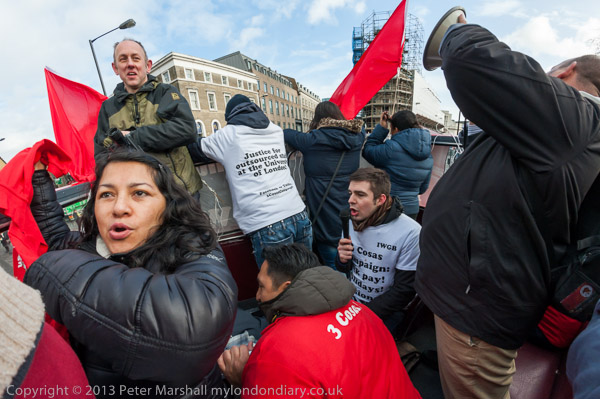
Both 16mm’s offer a great deal of depth of field, even if wide open, and with the fisheye, auto-focus is normally just a nuisance. After it had focussed a couple of times on objects less than a foot away I remembered to turn to manual focussing, set it at around 5ft and forgot it. It was a bright day, and once we had pulled out of the shadow of buildings and on to the road the exposures were around 1/500 – fast enough to counteract the vibration on the bus – and f11, where everything from around 18 inches away to infinity was sharp. Of course I could have worked at lower ISO, but there seldom seems to be any real point given the quality at that rating.
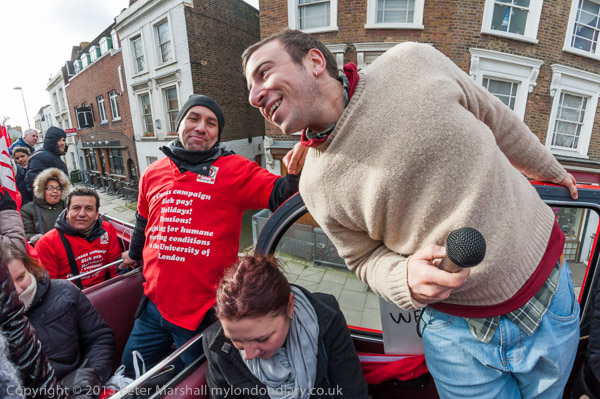
Once the bus was moving it was difficult to change lenses – I had to leave my bag out of the way under a seat to move around a little in the crush – but I didn’t want too in any case, as the fisheye was so useful, producing many images I like and could have got no other way
Of course I was also finding pictures to take with the D800E and the 18-105mm DX, including this one of the bus reflected in the glass-fronted building, which gives a better idea of how crowded the bus actually was. I’m almost invisible in the image, just able to poke a lens between a couple of people from the middle of the bus. It was pretty hard to get a clear view from where I was standing, and I was also watching careful to get a good view of the flags blowing in the wind. It would perhaps be a good idea to flip the image horizontally so that the mirrored text read the right way, but I rather find it annoying when people do that, or turn reflections upside down, so I’ve left it as a mirror image.
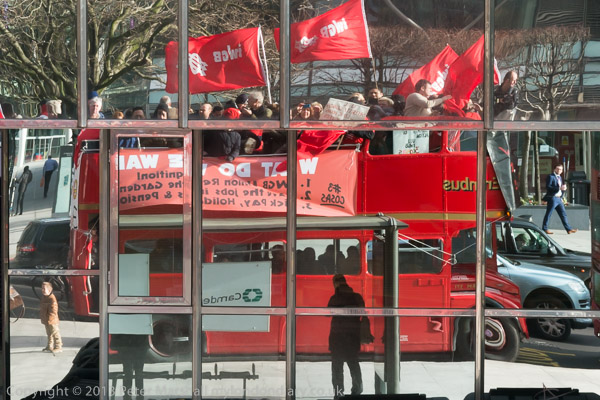
It was a long ride, taking in much of north London mainly because of one-way road systems and the difficulty of taking a large vehicle along narrow streets. I also rather suspect the driver got a little lost, especially when we went past Kentish Town station (and we passed Mornington Crescent both on the way to The Guardian and on the journey down to Parliament.)
More at ‘3 Cosas’ Strike Picket and Battle Bus.
Continue reading Open Top Bus with ‘3 Cosas’
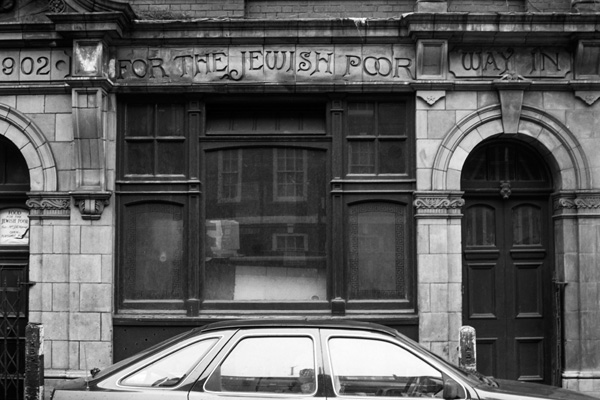
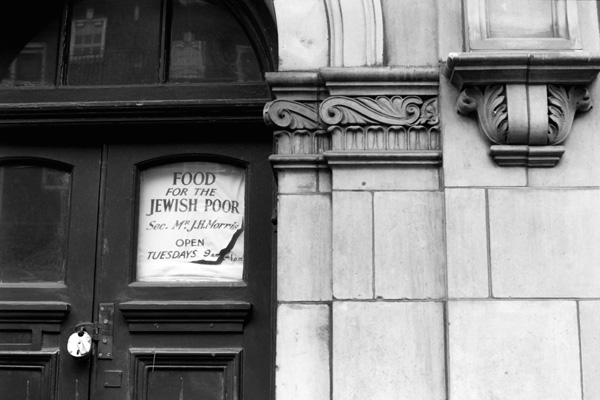
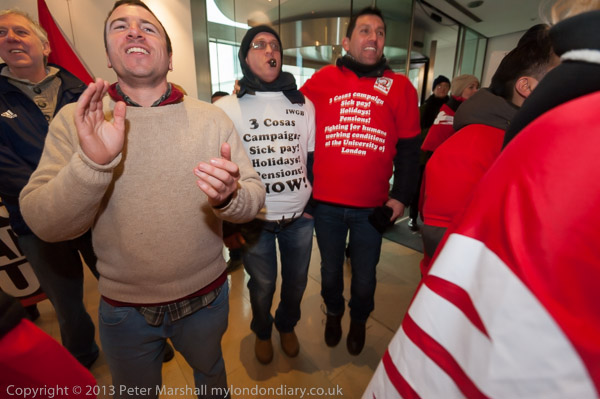 .IWGB protesters inside the Royal Opera House foyer
.IWGB protesters inside the Royal Opera House foyer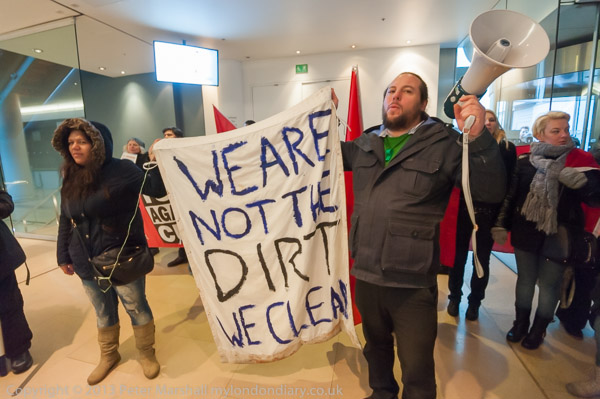
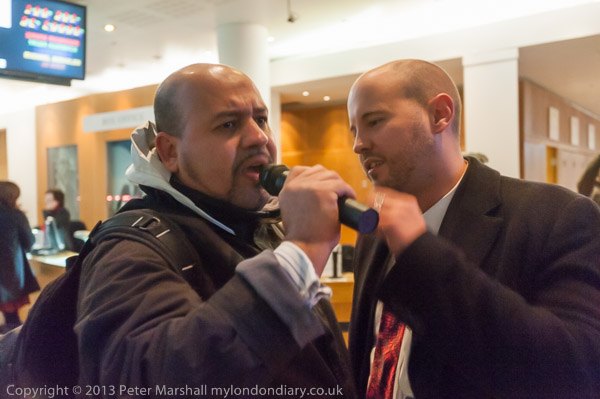
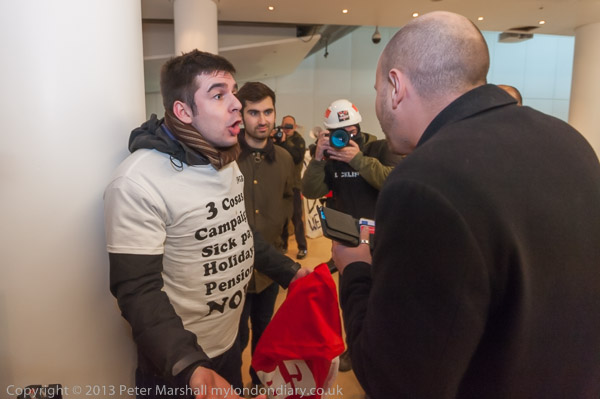
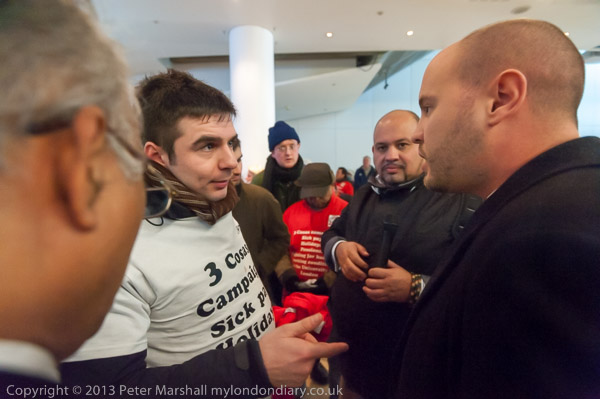
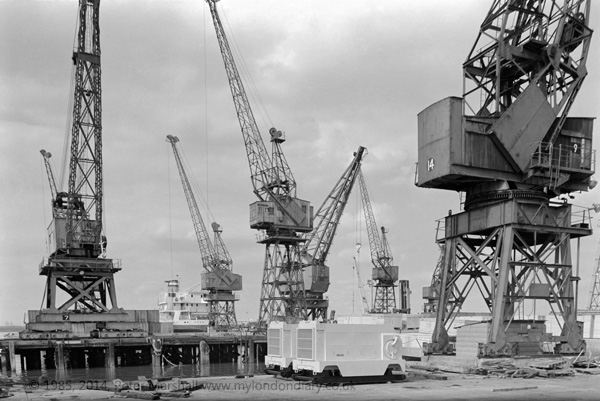
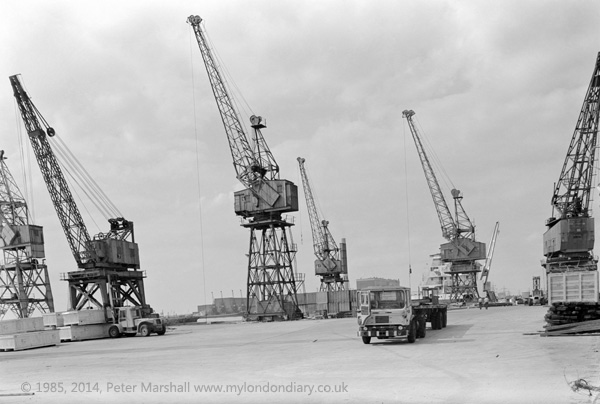
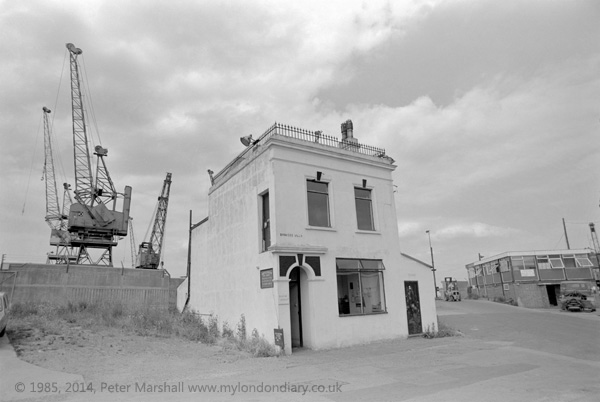
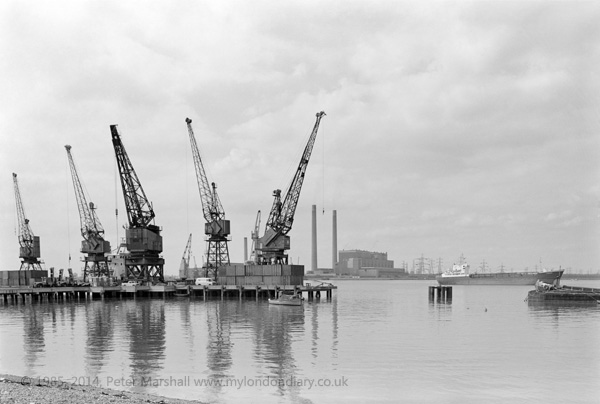
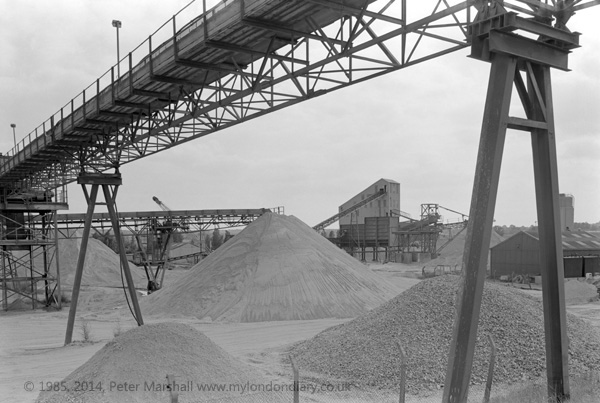
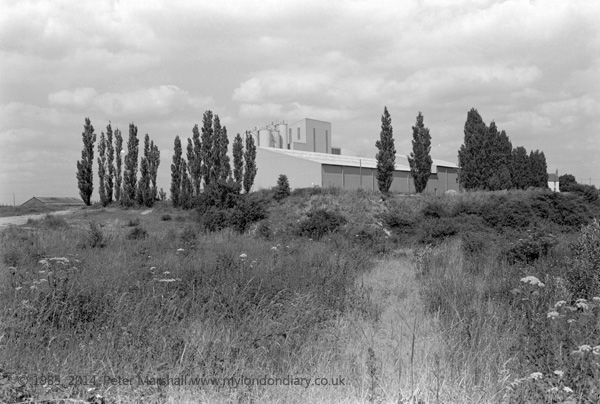
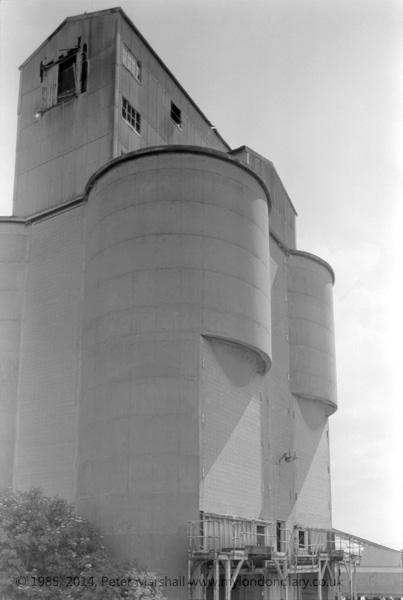



 16mm rectilinear view – 16-35 f4 Nikon zoom. 1/160 f6.3 ISO 800
16mm rectilinear view – 16-35 f4 Nikon zoom. 1/160 f6.3 ISO 800



